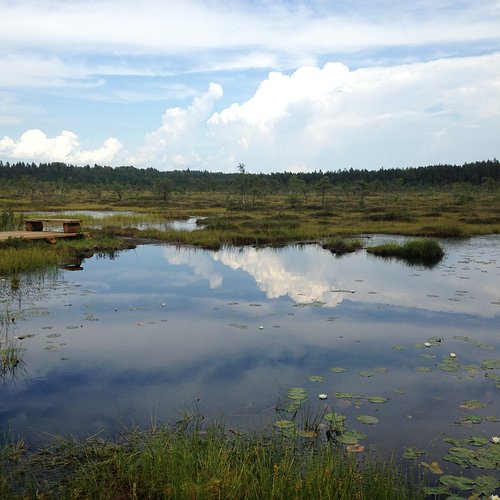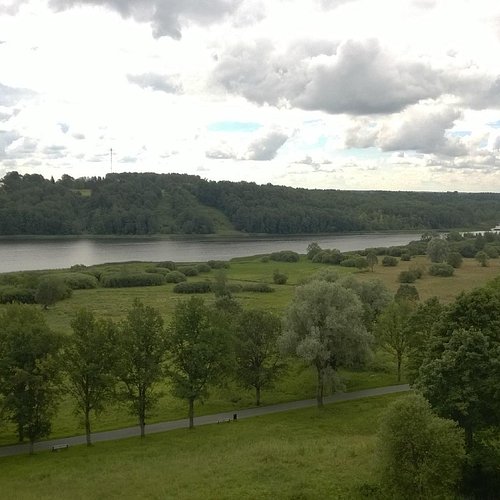What to do and see in Viljandi County, Viljandi County: The Best Nature & Parks
Discover the best top things to do in Viljandi County, Estonia including Soomaa National Park, Spring Siniallikas, Viljandi Musical Instrument Park, Lake Viljandi, Viljandi Lossipark, Arkaadia Gardens, Kaasiku Farm Gardens, Loodi Nature Park, Toonoja Hiking Trail, Karksi Primeval Valley.
Restaurants in Viljandi County
1. Soomaa National Park
Overall Ratings
5.0 based on 33 reviews
Reviewed By 594enep - Viljandi, Estonia
If you like to see unusual and a very peaceful landscape then I definitely suggest visiting Soomaa. The experience is guaranteed.
2. Spring Siniallikas
Overall Ratings
5.0 based on 1 reviews
Siniallkas (“Bluespring”) was an ancient sacrificial spring, named after its crystal clear water and its peculiar blue colour, which is due to the blue clay settled at the bottom of it.Interesting to know:A legend tells of a blue-eyed maiden who was teased by the lord of the manor. Out of distress, she drowned herself in the spring.The spring is said to reveal a treasure if seven brothers drank from it together.The water of the spring was believed to have a healing power. Silver coins were thrown into it as a sacrifice. Nearby is a hill fort, where ancient Estonians built a stronghold in the 12th-13th century, and Lake Sinialliku.
3. Viljandi Musical Instrument Park
Overall Ratings
4.5 based on 2 reviews
The park in front of the main building of Viljandi Manor is home to a 'world tree' bearing national patterns carved out of the old, dry oak. Both the tree and the large wooden Hiiu zither nearby made a home for themselves in the park in spring 2009, when Viljandi held the title of Forest Capital of Estonia. The park's 'orchestra' obtained new players in 2010: a willow whistle and bellows.
4. Lake Viljandi
Overall Ratings
4.5 based on 34 reviews
Lake Viljandi is in a primeval valley, which is 11 m deep, 450 m wide and 4600 metres long. The lake is well-known in Estonia thanks to the song about the boatman of VIljandi, who day-dreams about the beautiful blue eyes of a girl he once saw when he was young. The trail that goes around the lake will take hikers to the observation platform on the other shore where you will see a charming and unique silhouette of the town.
Reviewed By Globetrotter045 - Haacht, Belgium
The stairs down from the Town Hall will bring you to the lake in 5 minutes. Ofcourse it will take you a bit longer to get up the hill again :-) I found the lake shore a pleasant place for a hot summer afternoon. You can go for a swim, rent a boat or just relax on the small beach. There are changing cabins, a play area for the kids and a café.
5. Viljandi Lossipark
Overall Ratings
4.5 based on 30 reviews
The park is located on the slope of the ancient valley and is named after the ruins of the order castle. When the town started to grow in the second half of the 19th century the need for a recreational zone arose. In 1863 the right to use the castle hills was received from the manor. The works were initiated in 1893.In 1925 the Varese sild (Crow bridge) was finished and connected the town with the park.Interesting to know:· the works where initially carried out by convicts. These were people who were bearing liability in the house of detention for whatever reason and were thereby able to shorten their sentence.A main component of the landscape of the park is the relief, the proximity of a body of water is also important.Take a look at the aerial panorama (picture by Joel Tammet).
6. Arkaadia Gardens
Overall Ratings
4.0 based on 7 reviews
There is a pedestrian mall in the heart of Viljandi where you will see an amazing array of things - fragments of the medieval town wall; a modern walking track with unique fountains and benches; and examples of drying barn architecture from the olden days. The Arkaadia gardens were inspired by a dance hall and meeting place here that went by the same dreamy name among locals in the early 1930s.
7. Kaasiku Farm Gardens
Boasting one of the most beautiful gardens in Viljandi County, Kaasiku farm is a sight for sore eyes for gardening and nature lovers alike. The gardens are home to a wide variety of plants, and a trail leads from the farm to the edge of the Paistu valley. The museum exhibits farming equipment, household goods and the fine lacework and patterns of the ladies of the farm from the olden days. The jewel in the crown of the various examples of lacework techniques on display is the wedding dress of a former mistress of the farm.
8. Loodi Nature Park
Viljandi primeval valley, considered oldest in Sakala, makes the northern part of Loodi Nature park. In the south are Sinialliku hill-fort and Paistu primeval valley with it's numerous denudations. Good to know: one of the oldest and biggest stands of European larch is growing on Loodi-Pustmagi. Behind Loodi manor is Paistu artificial lake, a hiking trail beginning right at it's side. The trail follows the slopes and rises of surrounding landscape to the biggest of denudations, known as Loodi Hell in folk tradition. In the lower part of the denudation is a cave with a spring emerging from it.
9. Toonoja Hiking Trail
Those who like to hike in the fens on their own will love Toonoja Hiking Trail. The trail is next to the Joensuu-Kaansoo Road and it is more than 10 km long. You first have to cross the river – with no assistance – to get to the trail. Toonoja is an ancient village that used to be scattered on the islands in Kuresoo Swamp. There are no permanent residents in this village any more and the farms on the little islands deeper in the swamp have turned into ruins. However, people looking for interesting experiences have a lot to find over there: old ruined farm houses, the furniture left in the buildings, or simply beautiful views of farm sites.
10. Karksi Primeval Valley
Karksi valley is one of the most beautiful and famous places in Viljandimaa. Driving down along serpentine road over impounded lake Karksi appears Karksi fortress hill or bastion hill. It is believed that on the well protected by nature abrupt-sloped hill before knights conquests situated the fortress of Estonians.Interesting to know:- Order fortress construction started in the 2nd half of 13th century, stone structures date back to 14th and 15th centuries.- In the 1770-s in the ruins was built St.Peters Church in baroque style.- North from the church is situated sepulchral chapel of field marshal Lieven, that was built in 1730.







